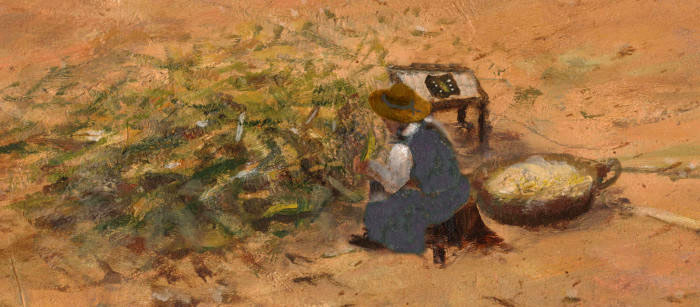
Corn and cotton were among the main crops Texas farmers raised. Corn provided food for people and animals and was cheaper and easier to grow in the central Texas soil and climate than grain crops such as wheat. In the late 1800's, corn was still harvested by hand, but several different types of tools had been invented to help with stripping the husks and kernels off the ears. Though it was a tedious task, it was not difficult to use the small hand-held sheller, so children could have helped with this chore. The corn husks were not wasted. They were used for a variety of purposes including stuffing mattresses, steaming food, making herbal teas and making toys. They were even used as toilet paper!
See what the archeologists found!
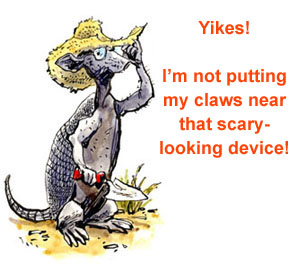
In the olden days, there were many types of tools and odd devices that we may not recognize today. At the Williams' farm, archeologists found a strange, rectangular piece of cast iron studded with dangerous looking metal teeth. It was not an instrument of torture, but a tool for husking and shelling ears of corn!
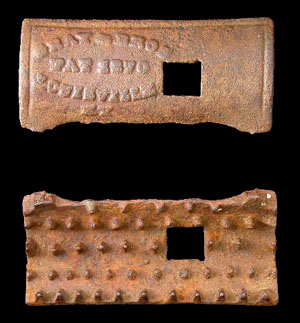
Although the archeologists only found half of the tool, they could read the name of the manufacturer—Gray & Brothers, Company—and track down its function. By researching online, they found a drawing from the patent application filed in December of 1870 showing the parts of the device and how it was used.
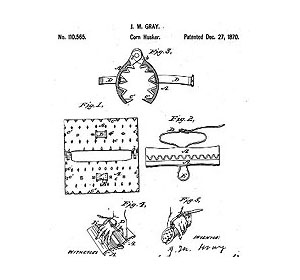
Based on the drawing at left, the sheller placed her hand around the tool and fastened it to her hand with a leather hand strap. An ear of dry corn was placed between the two metal pieces and pulled through the pointed device with a twisting motion. Shelling corn was still a tedious task, but at least the sheller made the work faster. This was important for farm families, because corn was a staple crop, with many uses. Archeologists at the Williams farm found several tiny fragments of burned corn, which might have been remnants of a meal. (Organic materials, such as food and plant parts, are more likely to be preserved in the ground if they were burned.)
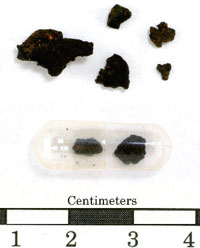
Corn, sometimes called maize, has been a part of the diet of the inhabitants of Texas since prehistoric times. The corn raised by 19th-century farmers didn't look like the bright yellow sweet corn we buy today. Some kinds weren't even yellow!
Corn was used for animal feed and eaten by humans. It was easier to grow and less expensive than wheat flour. Settlers roasted ears of corn or dried and shelled it, then ground the kernels into coarse flour to make cornbread, hoecake, pudding, and fritters. Dried corn was popped over the fire. Corn kernels were soaked in lye water to make hominy and ground for grits.
Corn was useful in many other ways as well. The dried cobs could be used for pipes, tool handles, toys, bottle stoppers, fishing floats and other practical items. Corn cobs were even used as fuel for fires and for smoking meat.
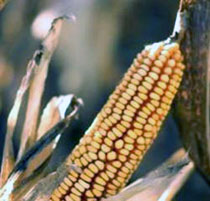
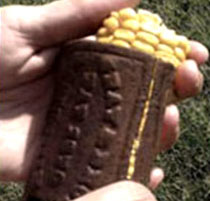
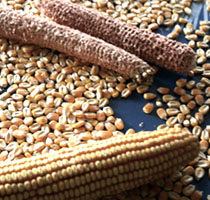
To shell corn by hand, you hold a dry ear of corn in front of you as if it were the handle on a push toy. Place a container beneath your hands and twist your hands back and forth across the ear as you pull it through the sheller tool. The motion will rub the kernels off of the cob and into the container. Unfortunately, tiny pieces of skin are also scraped off of your palms and fingers. The blisters that result can be very painful!

Finding the corn sheller artifact tells us that the Williams family had access to some of the new convenience tools of their time. Husking and shelling corn were time-consuming, monotonous tasks that had to be done by hand. Although the hinged, two-sided sheller did not do the job automatically, it did make the work faster.
